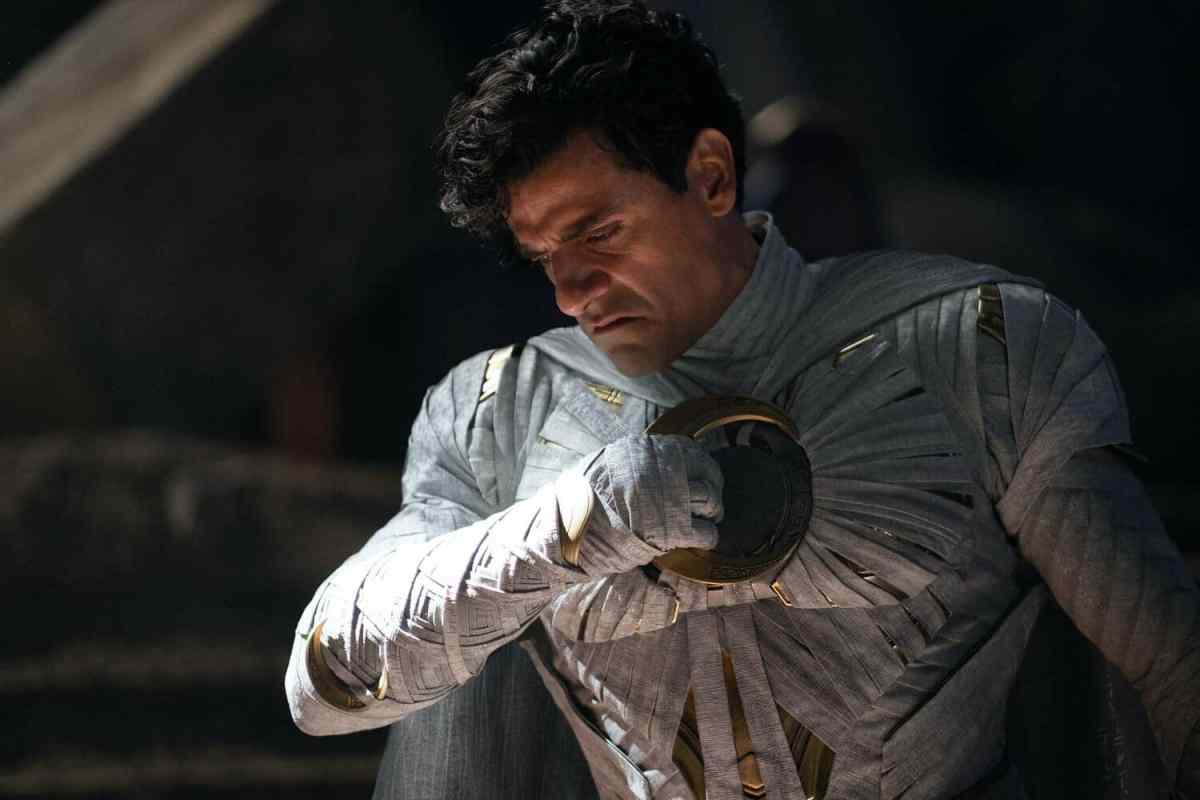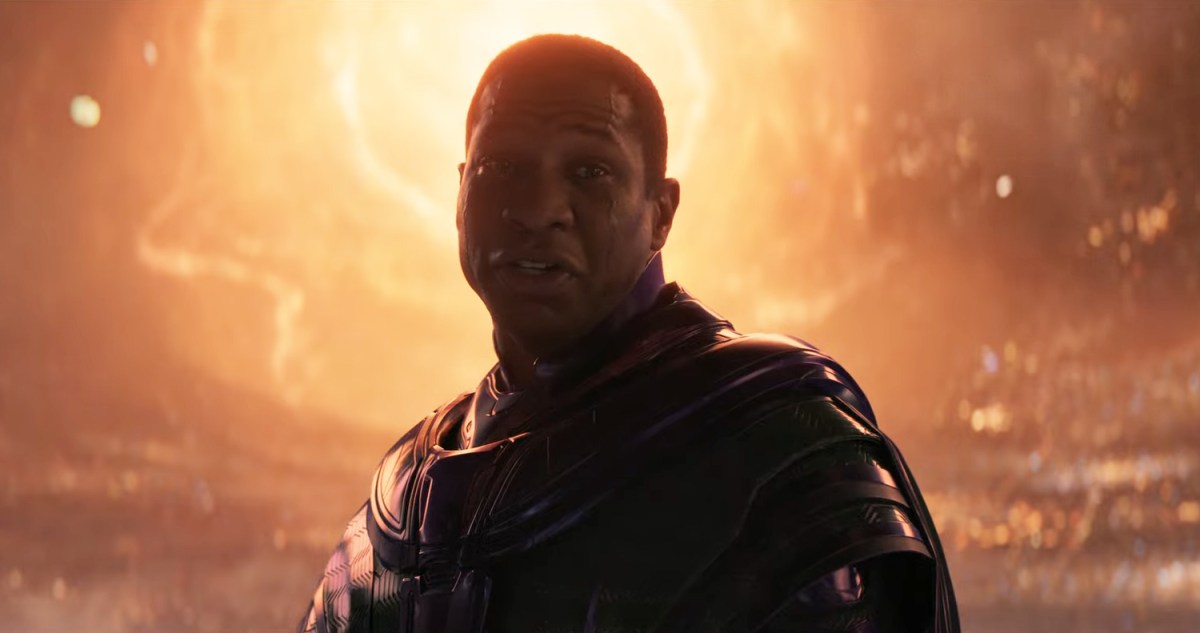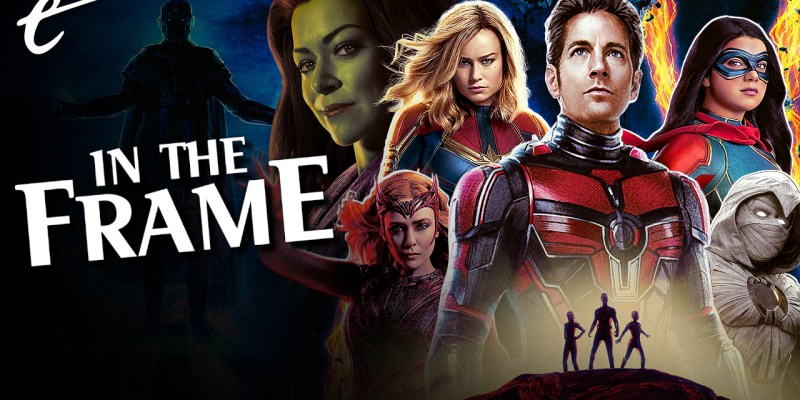Last week, in an interview with Entertainment Weekly, Kevin Feige suggested that Marvel Studios slow down its release schedule. “It is harder to hit the zeitgeist when there’s so much product out there — and so much ‘content,’ as they say, which is a word that I hate,” he stated. “So, people will see that as we get further into Phase 5 and 6. The pace at which we’re putting out the Disney+ shows will change so they can each get a chance to shine.”
That interview landed on Tuesday. On Thursday, The Hollywood Reporter announced that the company would release only two streaming shows this year, instead of the previously announced four. On Friday, a new poster release pulled double duty as an announcement that The Marvels was being pushed back from its original July release date the weekend after Barbie and Oppenheimer to a much less competitive space in November.
This is probably a good thing, even just from the perspective of visual effects houses. Those companies have spent years getting “pixel-fucked” making these sorts of blockbusters, with many stories singling out the unreasonable demands that Marvel Studios places on the visual effects artists that it contracts. A more relaxed release schedule hopefully means more humane work conditions and hopefully fairer compensation as well.
Still, it represents a pivot from Feige. Less than a month ago, he dismissed the concept of superhero fatigue. “I found that if we tell the story right, and we adapt them in a way that the audience still — knock on wood so far — is following us along 22-plus years later… we can [make] any types of movies that share two things: the Marvel Studios logo above the title and a seed of an idea from our publishing history,” he told The Movie Business Podcast.

This rescheduling suggests a concession that the audience will only follow the studio so far and so often, as well as that it has become necessary to throttle down the volume of product so that it might “hit the zeitgeist” with the intended force. This stands in sharp contrast to the business model that Marvel Studios has been pursuing over the past few years, which was built on the assumption of audiences’ bottomless hunger for the studio’s branded content.
After all, between streaming and theatrical releases, the company has released more content in the two years since July 2021 than in the previous 13 years combined. Last year at San Diego Comic-Con, Feige announced an aggressive release slate that promised two gigantic Avengers movies in 2025. Given how interconnected this massive schedule is, those dates now seem unlikely. This is to say nothing of the trouble reportedly unfolding behind the scenes on other projects, like Blade.
There is a larger context at play. Feige’s announcement that Marvel Studios would ease its foot off the accelerator followed news that the company’s owner, Disney, had endured a disastrous financial quarter. Owing to the loss of broadcast rights for Indian Premier League cricket matches, Disney+ lost 2.4 million subscribers. Streaming operating losses climbed from $500 million to $1.1 billion. The company also announced that it would be cutting 7,000 jobs.
Disney is not in the position that it was even half a decade ago. Late last year, the studio replaced chief executive Bob Chapek with his predecessor, Bob Iger, in perhaps the company’s least convincing nostalgic reboot. While most analysts concede that Disney is in a much stronger position to weather the upcoming media storm than its competitors, particularly in the streaming space, the House of Mouse faces some tough choices in the years ahead.

In terms of stopping the hemorrhaging of cash at Disney+, the Marvel Studios shows are an obvious target. Early reports indicated that WandaVision, The Falcon and the Winter Soldier, and Hawkeye cost around $25 million per episode. Given that the cast of Secret Invasion includes Samuel L. Jackson, Olivia Colman, Emilia Clarke, Martin Freeman, Ben Mendelsohn, and Don Cheadle, it seems unlikely that the price point has dropped for later shows.
To further position this shift in terms of Disney’s market strategy, Marvel’s parent company has historically tended to release fewer movies than its major competitors. It just spends more on those movies, in the hopes of higher return. It’s a conservative approach, one that favors sure bets over innovation. Marvel cutting down the number of theatrical releases — and spacing them out — is very much in keeping with Disney’s traditional release model.
However, the health of Disney as a corporation is tied to the success of Marvel Studios. Disney had a phenomenal year in 2019, making more money in the first seven months than any studio did in any previous year. The company’s total $13.15 billion box office haul was due to a culmination of factors, particularly franchise films like Toy Story 4 and Frozen 2 and adaptations like Aladdin and The Lion King. However, Avengers: Endgame was the crown jewel: the highest-grossing movie of all time.
Following 2019 was always going to be a challenge, for both Disney and Marvel. In some ways, the global pandemic provided a distraction and smokescreen. With lockdowns closing cinemas and keeping families indoors, streaming experienced an early (and perhaps misleading) boom that allowed Disney+ to perform past all expectations. However, with business slowly returning to normal, it seems like the bill has come due. Disney and Marvel are reckoning with the fact it’s no longer 2019.

Music critics will often refer to a band’s “imperial phase.” The term reportedly originated with former critic and Pet Shop Boys frontman Neil Tennant, describing the overlapping peaks of an artist’s creative and commercial success, although his bandmate Chris Lowe more bluntly summarized it as, “It means you can do what you like, usually followed by disappearing up your backside!” The incredible success of Endgame (and the larger Infinity Saga) was Marvel’s imperial phase.
Marvel followed Endgame with a somewhat disjointed and uneven slate of movies, one that often felt like a company trying to work out its midlife crisis on screen. This was a company that could do anything it wanted, and it found itself grappling with its own relevance and legacy. It’s no coincidence that many of the movies following Endgame are about parents and children, as many of the generation of fans who went to see Iron Man were starting families of their own.
However, there was also a simmering anxiety, as the company contemplated the possibility that it may no longer be the cultural force that it once was. Although it was hard for any movie to make money during the pandemic, the company leaned hard into promoting Doctor Strange in the Multiverse of Madness and Ant-Man and the Wasp: Quantumania as “important” movies for the shared universe, despite starring characters that could generously be described as “second-tier.”
As ever, it is important not to overstate this argument. In financial terms, Marvel has performed reasonably well in the wake of Endgame. Black Widow, Eternals, and Shang-Chi and the Legend of the Ten Rings all placed in the top 15 at the global box office in 2021, with the Sony co-production Spider-Man: No Way Home being the most successful movie of the year. Thor: Love and Thunder, Black Panther: Wakanda Forever, and Multiverse of Madness all placed in the top 10 for 2022.

As absurd as it is to say this, even that level of success feels like a step down for the company. Since 2012, the company’s releases have regularly topped domestic and global box office: The Avengers (domestic and global), Iron Man 3 (domestic), Guardians of the Galaxy (domestic), Captain America: Civil War (global), Black Panther (domestic), Avengers: Infinity War (global), and Avengers: Endgame (domestic and global). Fairly or not, the brand is underperforming relative to past performance.
Much was made of Quantumania surpassing box office projections, grossing $104 million in its domestic opening weekend. That is technically a franchise-best performance, in that it is higher than the opening weekends of Ant-Man and Ant-Man and the Wasp, but Quantumania was sold as a big event movie for the studio. Setting aside the Ant-Man franchise, the only Marvel Studios movie between Avengers: Age of Ultron and Avengers: Endgame with a lower opening weekend was Doctor Strange.
This is without getting into more abstract metrics of the company’s cultural impact. Critical reviews have been appreciably weaker for the franchise’s more recent entries. There is a sense of diminishing returns. While WandaVision made it into Nielsen’s end-of-year top 15 original streaming shows for 2021, none of the studio’s shows made the comparable list in 2022. In 2021, WandaVision alone earned 23 Emmy nominations. In 2022, the studio’s four eligible shows collectively tallied only 19.
[Editor’s Note: This specific paragraph contains spoilers for Ant-Man and the Wasp: Quantumania. Skip to the next paragraph to avoid spoilers.] In some ways, that tension has become part of the text of the shared universe. The mid-credits stinger in Quantumania suggests that the villainous Council of Kangs’ (Jonathan Majors) evil scheme is an existential threat to the Marvel Cinematic Universe: They dream of a world without superheroes, erasing the shared continuity from existence. It seems like the Marvel Cinematic Universe is making an argument for the necessity of its own continued existence, like the DC Universe in The Flash.

Once again, it is important not to overstate this. The franchise is still hugely successful. However, Feige’s recent comments and the studio’s recent scaling back of content suggests that Marvel Studios is aware that the company is past its peak. This is not to suggest that Avengers: The Kang Dynasty and Avengers: Secret Wars won’t shatter box office records, simply that the company is facing something of an uphill climb to reach that point.
It’s a good idea to scale back. After all, the two highest-grossing movies of 2022 — Top Gun: Maverick and Avatar: The Way of Water — were long-delayed sequels that were able to build audience anticipation over years. Perhaps Marvel Studios has reached a point where it can no longer count on audiences to blindly consume any branded content that it releases, understanding the basic rule of economics that oversaturating the market devalues the product. It seems like Marvel has figured out how much content the market can support.
In 2015, FX President John Landgraf predicted the inevitability of “peak TV,” a point at which there would be more television content than the market could support. It seems like we might finally be there. If nothing else, it seems we’ve already hit peak Marvel.
